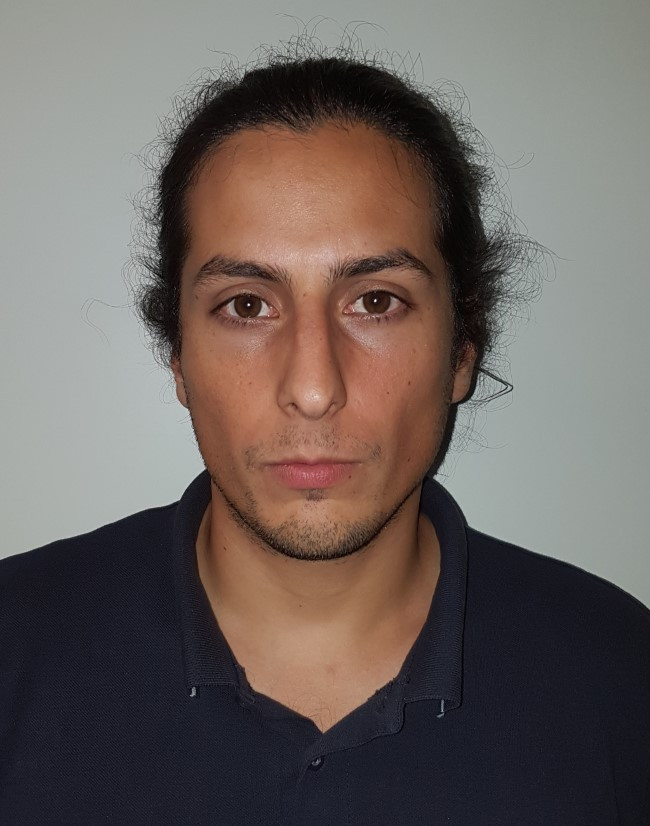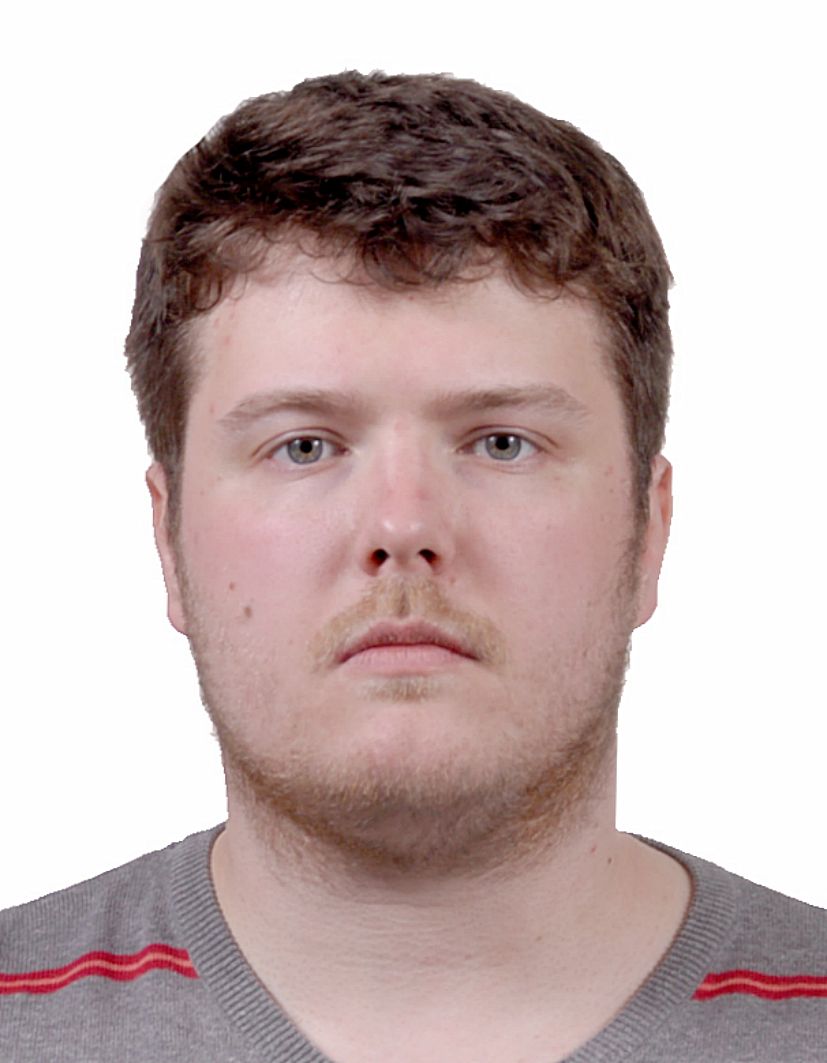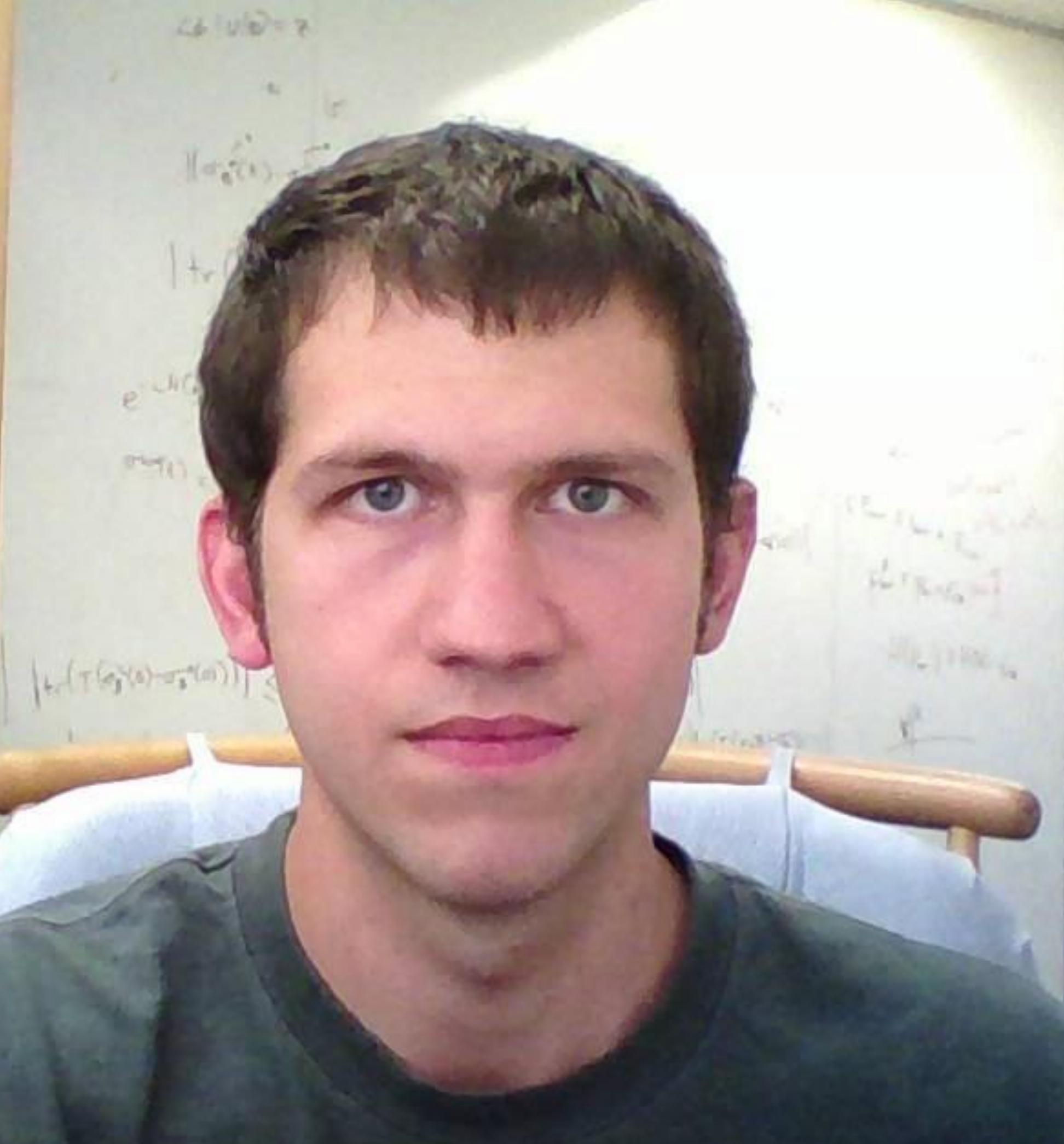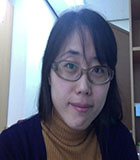Theory of Cold Atoms @ Seoul National University
Home
About Our Group
Here is a Promotional Video on Youtube
Selected Publications
Impact of trans-Planckian excitations on black-hole radiation in dipolar condensates
Phys. Rev. D 107, L121502 (Letter) (2023).
Phys. Rev. D 107, L121502 (Letter) (2023).
Number-conserving solution for dynamical quantum backreaction in a Bose-Einstein condensate
Phys. Rev. A 106, 053319 (2022).
Phys. Rev. A 106, 053319 (2022).
Probing the Scale Invariance of the Inflationary Power Spectrum in Expanding Quasi-Two-Dimensional Dipolar Condensates
Phys. Rev. Lett. 118, 130404 (2017).
Phys. Rev. Lett. 118, 130404 (2017).
Revealing Single-Trap Condensate Fragmentation by Measuring Density-Density Correlations after Time of Flight
Phys. Rev. Lett. 113, 140404 (2014).
Phys. Rev. Lett. 113, 140404 (2014).
Ultrafast quantum random access memory utilizing single Rydberg atoms in a Bose-Einstein condensate
Phys. Rev. Lett. 111, 240504 (2013).
Phys. Rev. Lett. 111, 240504 (2013).
Fragmented many-body ground states for scalar bosons in a single trap
Phys. Rev. Lett. 103, 060402 (2009).
Phys. Rev. Lett. 103, 060402 (2009).
Vortex quantum creation and winding number scaling in a quenched spinor Bose gas
Phys. Rev. Lett. 99, 120407 (2007).
Phys. Rev. Lett. 99, 120407 (2007).
Sweeping from the superfluid to the Mott phase in the Bose-Hubbard model
Phys. Rev. Lett. 97, 200601 (2006).
Phys. Rev. Lett. 97, 200601 (2006).
Stability of quasi-two-dimensional Bose-Einstein condensates with dominant dipole-dipole interactions
Phys. Rev. A 73, 031602 (Rapid Communication) (2006).
Phys. Rev. A 73, 031602 (Rapid Communication) (2006).
Quantum simulation of cosmic inflation in two-component Bose-Einstein condensates
Phys. Rev. A 70, 063615 (2004).
Phys. Rev. A 70, 063615 (2004).
"Cosmological" quasiparticle production in harmonically trapped superfluid gases
Phys. Rev. A 69, 033602 (2004).
Phys. Rev. A 69, 033602 (2004).
Gibbons-Hawking Effect in the Sonic de Sitter Space-Time of an Expanding Bose-Einstein-Condensed Gas
Phys. Rev. Lett. 91, 240407 (2003).
Phys. Rev. Lett. 91, 240407 (2003).
Vortex states of rapidly rotating dilute Bose-Einstein condensates
Phys. Rev. Lett. 90, 140402 (2003).
Phys. Rev. Lett. 90, 140402 (2003).
Members
Professor, Principal Investigator
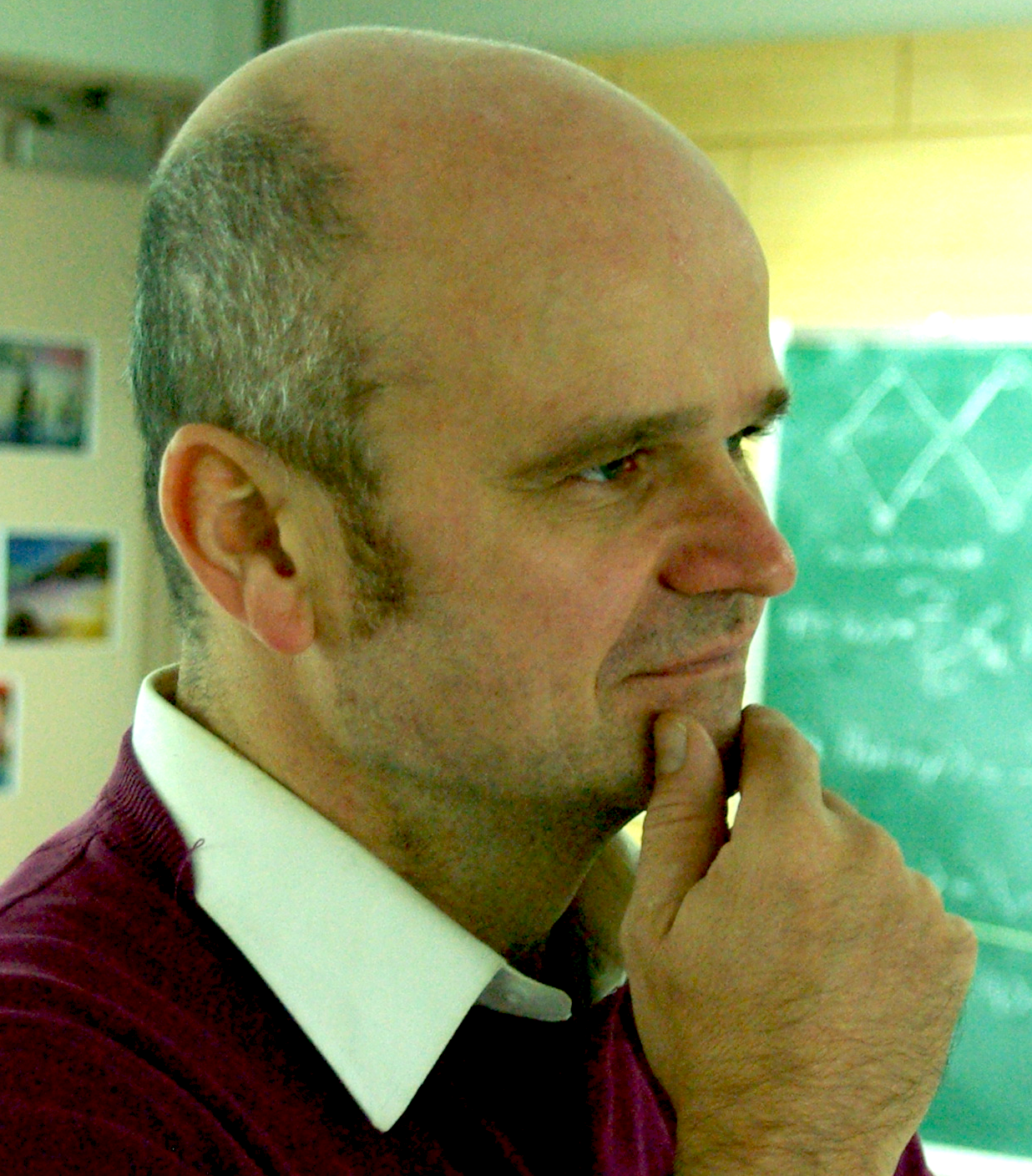
Postdocs

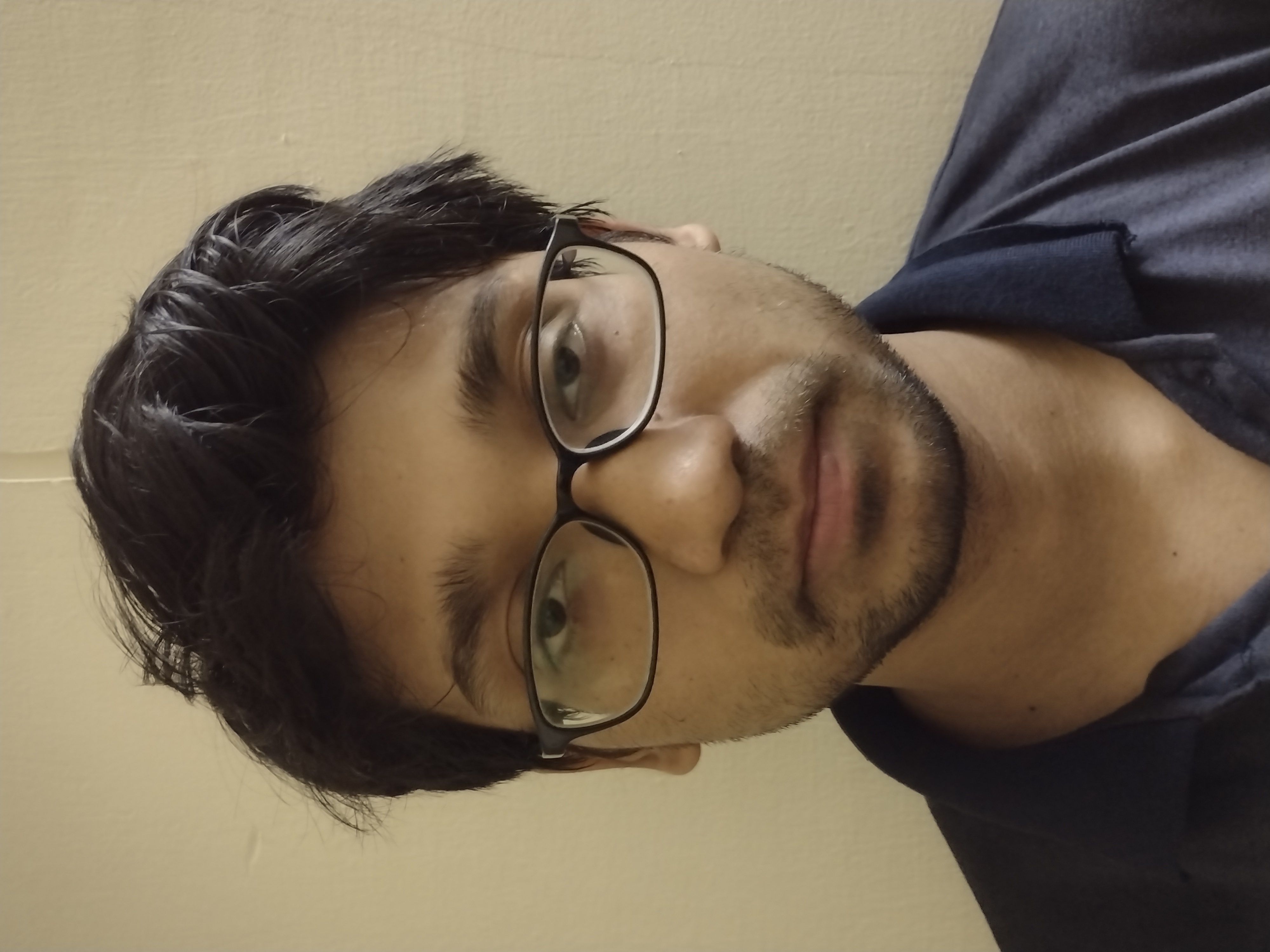
Graduate Students
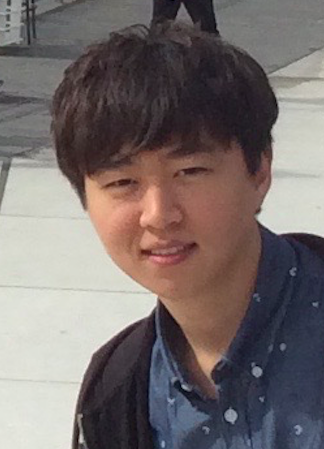
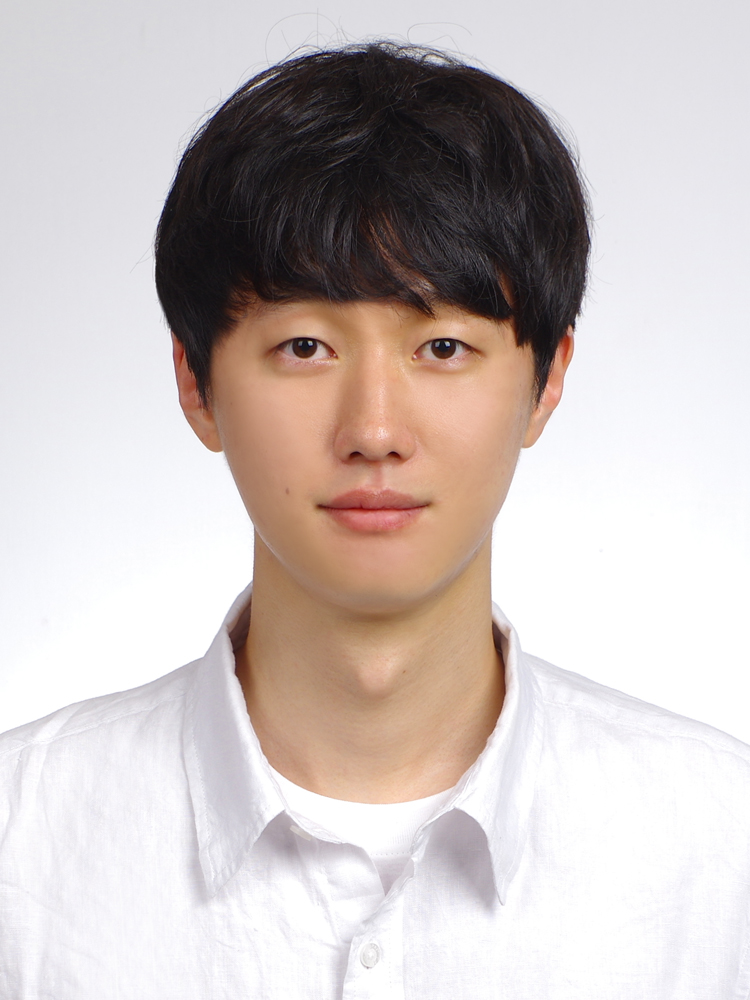
Alumni
Postdocs
Graduate Students
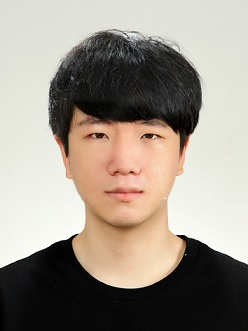
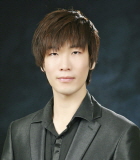
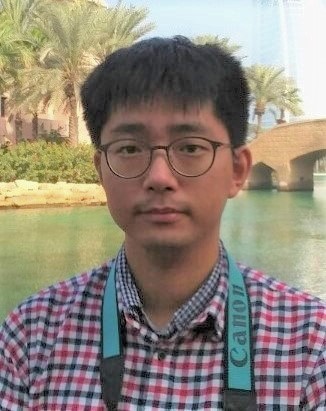
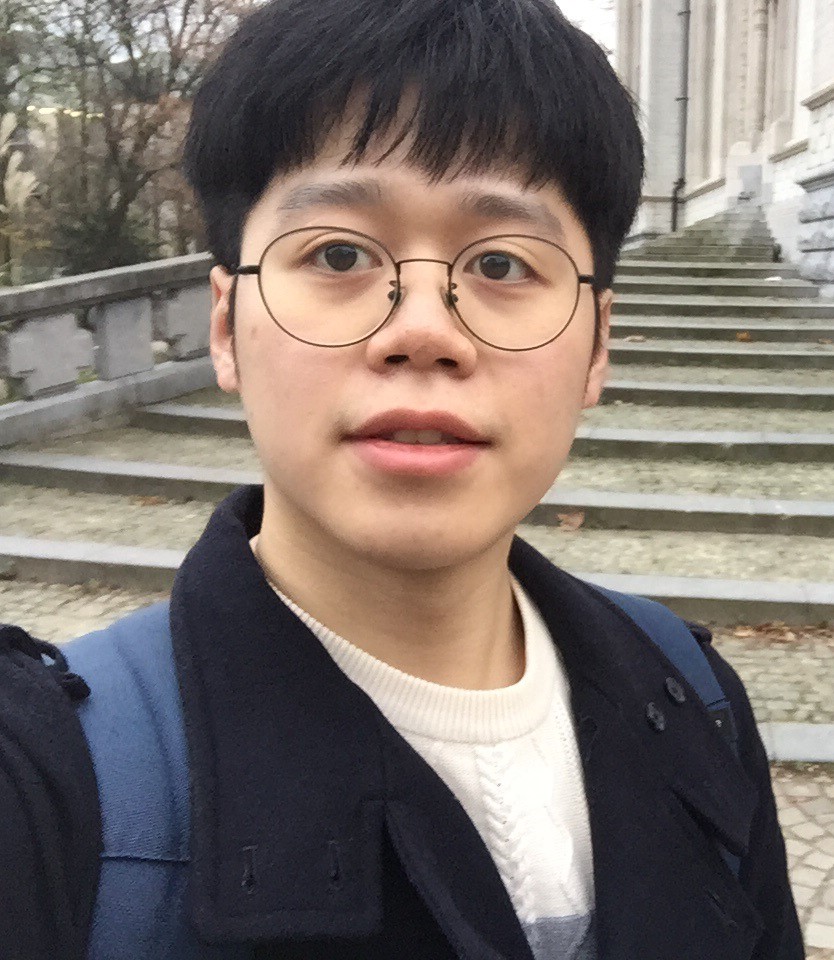
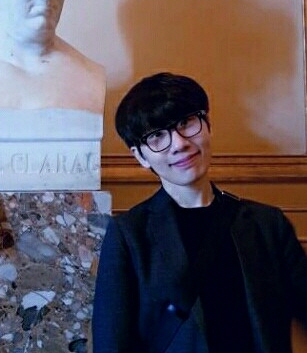
최석영 (Seok-Yeong Chä)
Analogue Quantum Cosmology
BK Thesis Excellence Award 2018
Now Senior Research Engineer at LG Display
Analogue Quantum Cosmology
BK Thesis Excellence Award 2018
Now Senior Research Engineer at LG Display
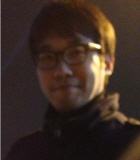
강명균 (Myung-Kyun Kang)
Measurement Theory of Quantum Many-Body States
BK Thesis Excellence Award 2016
Now at InBody
Measurement Theory of Quantum Many-Body States
BK Thesis Excellence Award 2016
Now at InBody
Undergraduate Students
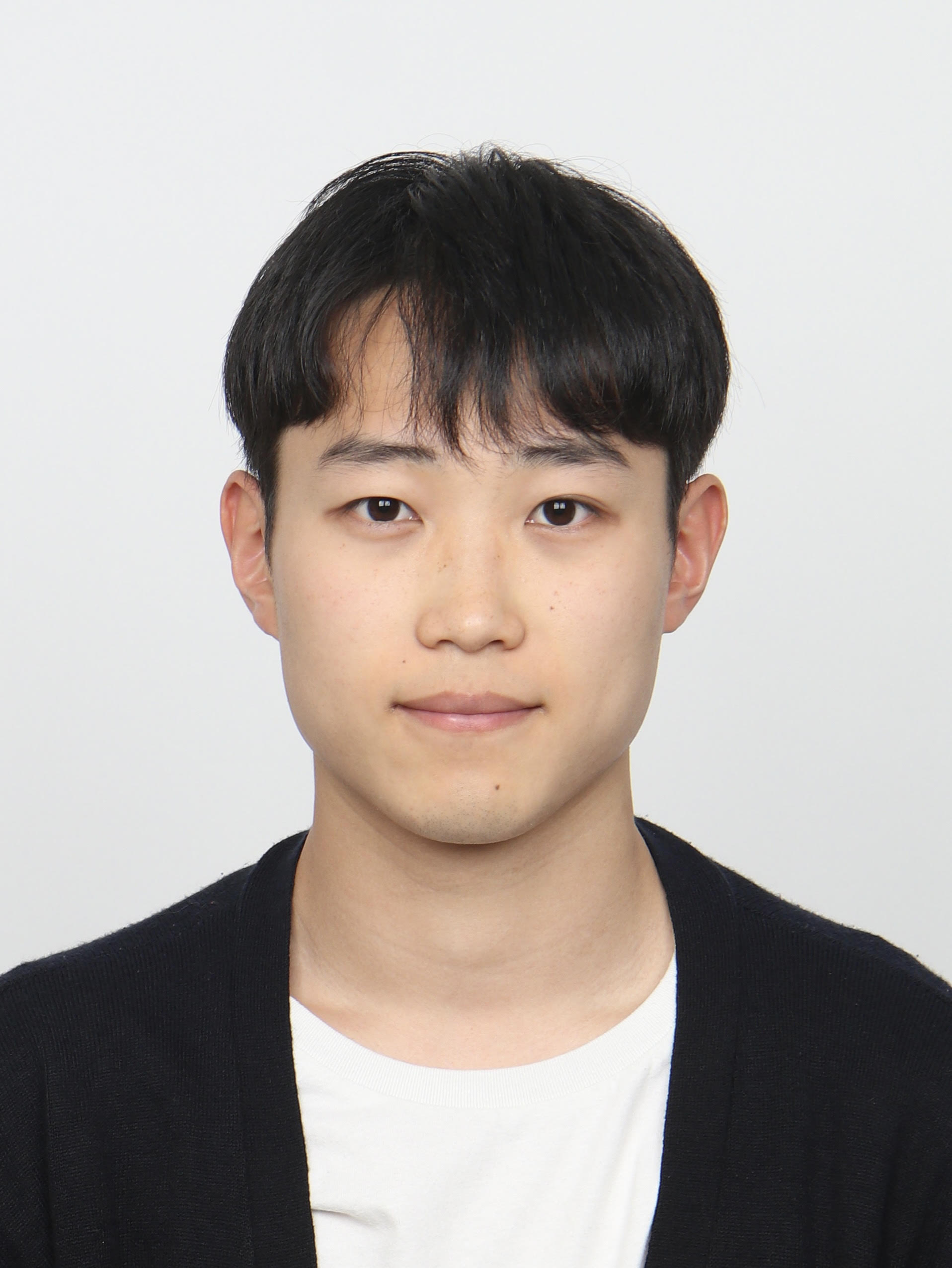

Research Interests
Analogue Gravity: Simulating Quantum Fields in Curved Spacetime
A variety of cosmologically motivated effective quasiparticle space-times can be produced in harmonically trapped superfluid Bose and Fermi gases. We have studied the analog of cosmological particle production in these effective space-times, induced by trapping potentials and coupling constants possessing an arbitrary time dependence. The WKB probabilities for phonon creation from the superfluid vacuum have been calculated, and an experimental procedure to detect quasiparticle production by measuring density-density correlation functions was proposed.
,
Probing the Scale Invariance of the Inflationary Power Spectrum in Expanding Quasi-Two-Dimensional Dipolar Condensates,
Phys. Rev. Lett.
118, 130404
(2017).
(See also Science Dong-a (과학동아) Article 기체 방울 속에 우주와 블랙홀을 재현하다. )
(See also Science Dong-a (과학동아) Article 기체 방울 속에 우주와 블랙홀을 재현하다. )
,
Quantum simulation of cosmic inflation in two-component Bose-Einstein condensates,
Phys. Rev. A
70, 063615
(2004).
,
“Cosmological” quasiparticle production in harmonically trapped superfluid gases,
Phys. Rev. A
69, 033602
(2004).
,
Gibbons-Hawking Effect in the Sonic de Sitter Space-Time of an Expanding Bose-Einstein-Condensed Gas,
Phys. Rev. Lett.
91, 240407
(2003).
Quantum Metrology: Harnessing Many-Body Correlations
Quantum metrology aims to describe the potentially enhanced usefulness of quantum systems over classical systems to carry out precise measurements of important physical quantities. To this end, the quantum Cramér-Rao theorem along with the Quantum Fisher Information contained in it gives an ultimate bound on the precision of the estimation of any classical parameter.
In a quantum estimation framework, many-body physics can play a very valuable role. Indeed, many-body correlations are a useful resource for quantum metrology. Using our expertise on many-body physics, and on dilute ultracold gases in particular, we aim to better understand the role of interactions in metrology.
On the other hand, we also study relativistic quantum metrology. By combining general relativity and quantum parameter estimation, we can find the estimation precision of parameters like the speed of light, curvature, Schwarzschild radius, etc.
,
Intrinsic measurement errors for the speed of light in vacuum,
Class. Quantum Grav.
34, 175009
(2017).
,
Amplification of the quantum superposition macroscopicity of a flux qubit by a magnetized Bose gas,
Phys. Rev. A
94, 042320
(2016).
Fragmentation of Bosonic Condensates as a Many-Body Phenomenon
We investigate whether the many-body ground states of bosons in a generalized two-mode model with localized inhomogeneous single-particle orbitals and anisotropic long-range interactions (e.g., dipole-dipole interactions) are coherent or fragmented. It is demonstrated that fragmentation can take place in a single trap for positive values of the interaction couplings, implying that the system is potentially stable. Furthermore, the degree of fragmentation is shown to be insensitive to small perturbations on the single-particle level.
,
"Photonic" Cat States from Strongly Interacting Matter Waves,
Phys. Rev. Lett.
115, 260404
(2015).
,
Revealing Single-Trap Condensate Fragmentation by Measuring Density-Density Correlations after Time of Flight,
Phys. Rev. Lett.
113, 140404
(2014).
,
Robustness of fragmented condensate many-body states for continuous distribution amplitudes in Fock space,
Phys. Rev. A
88, 053602
(2013).
,
Fragmented Many-Body Ground States for Scalar Bosons in a Single Trap,
Phys. Rev. Lett.
103, 060402
(2009).
Hybrid Quantum Systems
We have established a long-lived and rapidly accessible quantum memory unit (quantum RAM) in a hybrid system. The operational Hilbert space is spanned by states involving the two macroscopically occupied hyperfine levels of a miscible binary atomic Bose-Einstein condensate and the Rydberg state of a single atom therein, which interacts magnetically with the flux qubit of a SQUID.
An arbitrary qubit state, initially prepared using the flux qubit, can be rapidly transferred to and from the trapped atomic ensemble in approximately 10 ns and with a large fidelity of 97%, via an effective two-photon process using an external laser for the transition to the Rydberg level. The achievable ultrafast transfer of quantum information enables a large number of storage and retrieval cycles from the highly controllable quantum optics setup of a dilute ultracold gas, even within the typically very short flux qubit lifetimes of the order of microseconds.
,
Ultrafast Quantum Random Access Memory Utilizing Single Rydberg Atoms in a Bose-Einstein Condensate,
Phys. Rev. Lett.
111, 024504
(2013).
,
Hybrid of superconducting quantum interference device and atomic Bose-Einstein condensate: An architecture for quantum information processing,
Phys. Rev. A
87, 052303
(2013).
Publications
2024
Beneficial and detrimental entanglement for quantum battery charging
AVS Quantum Sci. 6, 012001 (2024).
AVS Quantum Sci. 6, 012001 (2024).
2023
Impact of trans-Planckian excitations on black-hole radiation in dipolar condensates
Phys. Rev. D 107, L121502 (Letter) (2023).
Phys. Rev. D 107, L121502 (Letter) (2023).
Dispersive censor of acoustic spacetimes with a shock-wave singularity
Phys. Rev. D 107, 084023 (2023).
Phys. Rev. D 107, 084023 (2023).
Nonlocal field theory of quasiparticle scattering in dipolar Bose-Einstein condensates
SciPost Phys. Core 6, 003 (2023).
SciPost Phys. Core 6, 003 (2023).
2022
Number-conserving solution for dynamical quantum backreaction in a Bose-Einstein condensate
Phys. Rev. A 106, 053319 (2022).
Phys. Rev. A 106, 053319 (2022).
Existence of steady-state black hole analogs in finite quasi-one-dimensional Bose-Einstein condensates
Phys. Rev. D 105, 124066 (2022).
Phys. Rev. D 105, 124066 (2022).
Testing the upper bound on the speed of scrambling with an analogue of Hawking radiation using trapped ions
Eur. Phys. J. C 82, 212 (2022).
Eur. Phys. J. C 82, 212 (2022).
Inherent nonlinearity of fluid motion and acoustic gravitational wave memory
Phys. Rev. D 105, 022003 (2022).
Phys. Rev. D 105, 022003 (2022).
2021
Benchmarking the multiconfigurational Hartree method by the exact wavefunction of two harmonically trapped bosons with contact interaction
Ann. Phys. (N. Y.) 434, 168592 (2021).
Ann. Phys. (N. Y.) 434, 168592 (2021).
2020
Stoner-Wohlfarth switching of the condensate magnetization in a dipolar spinor gas and the metrology of excitation damping
Phys. Rev. A 102, 013315 (2020).
Phys. Rev. A 102, 013315 (2020).
2019
Self-consistent determination of the many-body state of ultracold bosonic atoms in a one-dimensional harmonic trap
Ann. Phys. (N. Y.) 405, 274 (2019).
Ann. Phys. (N. Y.) 405, 274 (2019).
Many-body quantum metrology with scalar bosons in a single potential well
Phys. Rev. A 99, 043618 (2019).
Phys. Rev. A 99, 043618 (2019).
2018
Mesoscopics of half-quantum vortex pair deconfinement in a trapped spin-one condensate
Phys. Rev. A 98, 053602 (2018).
Phys. Rev. A 98, 053602 (2018).
Implementation-independent sufficient condition of the Knill-Laflamme type for the autonomous protection of logical qudits by strong engineered dissipation
Phys. Rev. A 98, 012317 (2018).
Phys. Rev. A 98, 012317 (2018).
2017
Intrinsic measurement errors for the speed of light in vacuum
Class. Quantum Grav. 34, 175009 (2017).
Class. Quantum Grav. 34, 175009 (2017).
Probing the Scale Invariance of the Inflationary Power Spectrum in Expanding Quasi-Two-Dimensional Dipolar Condensates
Phys. Rev. Lett. 118, 130404 (2017).
Phys. Rev. Lett. 118, 130404 (2017).
2016
Amplification of the quantum superposition macroscopicity of a flux qubit by a magnetized Bose gas
Phys. Rev. A 94, 042320 (2016).
Phys. Rev. A 94, 042320 (2016).
Quantum sine-Gordon dynamics on analogue curved spacetime in a weakly imperfect scalar Bose gas
Phys. Rev. D 94, 024051 (2016).
Phys. Rev. D 94, 024051 (2016).
2015
Condensate fragmentation as a sensitive measure of the quantum many-body behavior of bosons with long-range interactions
Phys. Rev. A 91, 063621 (2015).
Phys. Rev. A 91, 063621 (2015).
2014
Consistent perturbative treatment of the subohmic spin-boson model yielding arbitrarily small $T_2/T_1$ decoherence time ratios
Phys. Rev. B 90, 220302 (Rapid Communication) (2014).
Phys. Rev. B 90, 220302 (Rapid Communication) (2014).
Revealing Single-Trap Condensate Fragmentation by Measuring Density-Density Correlations after Time of Flight
Phys. Rev. Lett. 113, 140404 (2014).
Phys. Rev. Lett. 113, 140404 (2014).
Universality of the Berezinskii–Kosterlitz–Thouless type of phase transition in the dipolar XY-model
New J. Phys. 16, 053011 (2014).
New J. Phys. 16, 053011 (2014).
Truncated many-body dynamics of interacting bosons: A variational principle with error monitoring
Int. J. Mod. Phys. B 28, 1550021 (2014).
Int. J. Mod. Phys. B 28, 1550021 (2014).
2013
Ultrafast quantum random access memory utilizing single Rydberg atoms in a Bose-Einstein condensate
Phys. Rev. Lett. 111, 024504 (2013).
Phys. Rev. Lett. 111, 024504 (2013).
Robustness of fragmented condensate many-body states for continuous distribution amplitudes in Fock space
Phys. Rev. A 88, 053602 (2013).
Phys. Rev. A 88, 053602 (2013).
Interaction-induced coherence among polar bosons stored in triple-well potentials
Phys. Rev. A 88, 063608 (2013).
Phys. Rev. A 88, 063608 (2013).
Stability of spherically trapped three-dimensional Bose-Einstein condensates against macroscopic fragmentation
Phys. Rev. A 87, 023632 (2013).
Phys. Rev. A 87, 023632 (2013).
Hybrid of superconducting quantum interference device and atomic Bose-Einstein condensate: An architecture for quantum information processing
Phys. Rev. A 87, 052303 (2013).
Phys. Rev. A 87, 052303 (2013).
2012
Verifying the observer dependence of quasiparticle counts in the analogue gravity of dilute ultracold quantum gases
arXiv:1205.5548 [cond-mat.quant-gas] (2012).
arXiv:1205.5548 [cond-mat.quant-gas] (2012).
Identifying strongly correlated supersolid states on the optical lattice by quench-induced $\pi$-states
EPL 99, 66003 (2012).
EPL 99, 66003 (2012).
2011
Many-site coherence revivals in the extended Bose-Hubbard model and the Gutzwiller approximation
Phys. Rev. A 84, 063635 (2011).
Phys. Rev. A 84, 063635 (2011).
Emergence of a new pair-coherent phase in many-body quenches of repulsive bosons
Phys. Rev. A 84, 011604 (Rapid Communication) (2011).
Phys. Rev. A 84, 011604 (Rapid Communication) (2011).
2010
System size scaling of topological defect creation in a second-order dynamical quantum phase transition
New J. Phys. 12, 095020 (2010).
New J. Phys. 12, 095020 (2010).
Interacting trapped bosons yield fragmented condensate states in low dimensions
Phys. Rev. A 82, 013607 (2010).
Phys. Rev. A 82, 013607 (2010).
Increased Cation Conductance in Human Erythrocytes Artificially Aged by Glycation
J. Membrane Biol. 235, 177-189 (2010).
J. Membrane Biol. 235, 177-189 (2010).
$O(N)$ symmetry-breaking quantum quench: Topological defects versus quasiparticles
Phys. Rev. D 81, 025017 (2010).
Phys. Rev. D 81, 025017 (2010).
2009
Fragmented many-body ground states for scalar bosons in a single trap
Phys. Rev. Lett. 103, 060402 (2009).
Phys. Rev. Lett. 103, 060402 (2009).
Before 2009
2008
Tunneling-induced damping of phase coherence revivals in deep optical lattices
Phys. Rev. A 78, 061603 (Rapid Communication) (2008).
Phys. Rev. A 78, 061603 (Rapid Communication) (2008).
Effect of fluctuations on the superfluid-supersolid phase transition on the lattice
Phys. Rev. A 78, 033604 (2008).
Phys. Rev. A 78, 033604 (2008).
Bogoliubov theory of quantum correlations in the time-dependent Bose-Hubbard model
Phys. Rev. A 77, 043615 (2008).
Phys. Rev. A 77, 043615 (2008).
Coherent single atom shuttle between two Bose-Einstein condensates
Phys. Rev. A 77, 031602 (Rapid Communication) (2008).
Phys. Rev. A 77, 031602 (Rapid Communication) (2008).
2007
Vortex quantum creation and winding number scaling in a quenched spinor Bose gas
Phys. Rev. Lett. 99, 120407 (2007).
Phys. Rev. Lett. 99, 120407 (2007).
Dynamical Aspects of Analogue Gravity: The Backreaction of Quantum Fluctuations in Dilute Bose-Einstein Condensates
Lect. Notes Phys. 718, 93-113 (2007).
Lect. Notes Phys. 718, 93-113 (2007).
2006
Sweeping from the superfluid to the Mott phase in the Bose-Hubbard model
Phys. Rev. Lett. 97, 200601 (2006).
Phys. Rev. Lett. 97, 200601 (2006).
Mean-field expansion in Bose-Einstein condensates with finite-range interactions
Int. J. Mod. Phys. B 20, 3555-3565 (2006).
Int. J. Mod. Phys. B 20, 3555-3565 (2006).
Stability of quasi-two-dimensional Bose-Einstein condensates with dominant dipole-dipole interactions
Phys. Rev. A 73, 031602 (Rapid Communication) (2006).
Phys. Rev. A 73, 031602 (Rapid Communication) (2006).
2005
Reply to Comment on "Dynamical role of anyonic excitation statistics in rapidly rotating Bose gases"
Phys. Rev. Lett. 94, 208904 (2005).
Phys. Rev. Lett. 94, 208904 (2005).
Maximal length of trappped one-dimensional Bose-Einstein condensates
J. Low Temp. Phys. 138, 723-728 (2005).
J. Low Temp. Phys. 138, 723-728 (2005).
2004
Quantum simulation of cosmic inflation in two-component Bose-Einstein condensates
Phys. Rev. A 70, 063615 (2004).
Phys. Rev. A 70, 063615 (2004).
Dynamical role of anyonic excitation statistics in rapidly rotating Bose gases
Phys. Rev. Lett. 93, 160403 (2004).
Phys. Rev. Lett. 93, 160403 (2004).
"Cosmological" quasiparticle production in harmonically trapped superfluid gases
Phys. Rev. A 69, 033602 (2004).
Phys. Rev. A 69, 033602 (2004).
Observer dependence for the phonon content of the sound field living on the effective curved space-time background of a Bose-Einstein condensate
Phys. Rev. D 69, 064021 (2004).
Phys. Rev. D 69, 064021 (2004).
Vortex liquids and vortex quantum Hall states in trapped rotating Bose gases
J. Phys. B: At. Mol. Opt. Phys. 37, S301-S310 (2004).
J. Phys. B: At. Mol. Opt. Phys. 37, S301-S310 (2004).
2003
Zero-temperature damping of Bose-Einstein condensate oscillations by vortex-antivortex pair creation
Phys. Rev. A 68, 011602 (Rapid Communication) (2003).
Phys. Rev. A 68, 011602 (Rapid Communication) (2003).
Gibbons-Hawking Effect in the Sonic de Sitter Space-Time of an Expanding Bose-Einstein-Condensed Gas
Phys. Rev. Lett. 91, 240407 (2003).
Phys. Rev. Lett. 91, 240407 (2003).
Warped space-time for phonons moving in a perfect nonrelativistic fluid
Europhys. Lett. 62, 1-7 (2003).
Europhys. Lett. 62, 1-7 (2003).
On the space-time curvature experienced by quasiparticle excitations in the Painlevé-Gullstrand effective geometry
Ann. Phys. (N.Y.) 304, 22-39 (2003).
Ann. Phys. (N.Y.) 304, 22-39 (2003).
Vortex states of rapidly rotating dilute Bose-Einstein condensates
Phys. Rev. Lett. 90, 140402 (2003).
Phys. Rev. Lett. 90, 140402 (2003).
Before 2003
Electromagnetomotive force fields in noninertial reference frames and accelerated superconducting quantum interferometers
Phys. Rev. B 64, 214509 (2001).
Phys. Rev. B 64, 214509 (2001).
Specific heat of the Kelvin modes in low temperature superfluid turbulence
Phys. Rev. B 63, 212504 (2001).
Phys. Rev. B 63, 212504 (2001).
Thermal quasi-equilibrium states across Landau horizons in the effective gravity of superfluids
Int. J. Mod. Phys. D 10, 57-88 (2001).
Int. J. Mod. Phys. D 10, 57-88 (2001).
Tunnelling of topological line defects in strongly coupled superfluids
Ann. Phys. (Leipzig) 9, 523-570 (2000).
Ann. Phys. (Leipzig) 9, 523-570 (2000).
On the theory of vortex quantum tunnelling in the dense Bose superfluid helium II
Physica B 255, 41-54 (1998).
Physica B 255, 41-54 (1998).
Massive Charged Strings in the Description of Vortex Ring Quantum Nucleation
J. Low Temp. Phys. 110, 39-44 (1998).
J. Low Temp. Phys. 110, 39-44 (1998).
Transition probabilities for a Rydberg atom in the field of a gravitational wave
Class. Quantum Grav. 11, 463-474 (1994).
Class. Quantum Grav. 11, 463-474 (1994).
Links
Ultracold Atom and Other Research Communities
UltraCold Atom News
Research Gate
Campus
Department of Physics & Astronomy, SNU (서울대학교 물리학과)
My SNU
SNU Library
Journals and Databases
Physical Review Letters (PRL)
Physical Review A (PRA)
Nature
Nature Physics
Science
arXiv.org/cond-mat.quant-gas
Science Direct
Web of Knowledge
Physical Societies
European Physical Society (EPS)
American Physical Society (APS)
German Physical Society (DPG)

